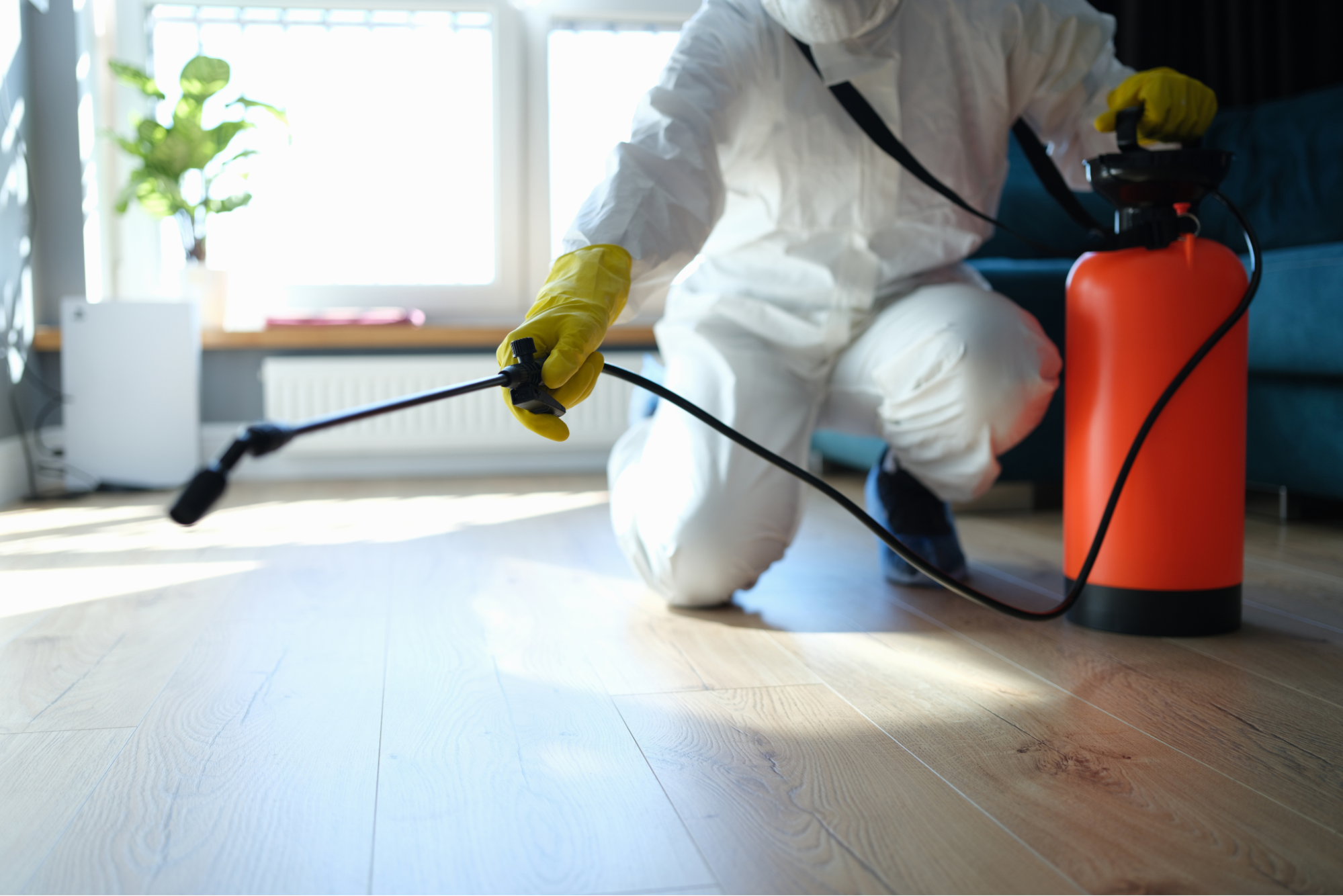Professional A1 Charlotte Bed Bug Exterminator - Quality Solution Assured
Professional A1 Charlotte Bed Bug Exterminator - Quality Solution Assured
Blog Article
Bed Bug Treatment Break Down: Comparing Chemical Vs. Non-Chemical Solutions
In the realm of pest control, especially when handling the consistent concern of bed bugs, the selection in between chemical and non-chemical therapy solutions can be a pivotal one. Both methods offer distinct benefits and drawbacks, influencing aspects such as performance, safety and security factors to consider, and total expense. By checking out the nuanced details of each approach, a clearer understanding of which course to seek in resolving a bed pest invasion can be achieved.
Effectiveness of Chemical Therapies
Chemical treatments for bed pest invasions have actually been widely acknowledged for their fast and potent effectiveness in eradicating these bugs. When thinking about the efficiency of chemical therapies, it is essential to comprehend that they can offer a quick and extensive service to a bed insect trouble. Expert pest control experts frequently count on insecticides to target bed insects at various phases of their life process, including fairies, eggs, and grownups. These chemicals usually function by disrupting the bed insects' nerve system, bring about paralysis and eventual death.
In addition, chemical therapies have the advantage of using recurring impacts, meaning that they can remain to eliminate bed pests even after the first application. This residual activity is especially valuable in combating any kind of possible re-infestations. In addition, the quick action of chemical therapies can bring alleviation to individuals facing serious bed bug invasions, allowing them to restore control of their living rooms rapidly.
Safety And Security Worry About Chemical Solutions
One vital element that needs cautious consideration when making use of chemical solutions for bed bug therapy is guaranteeing the safety and security of occupants and the setting. While chemical therapies can be efficient in getting rid of bed bugs, they may position risks otherwise managed appropriately. Among the main security interest in chemical solutions is the potential injury they can create to human health. Exposure to specific chemicals utilized in bed bug therapies can bring about respiratory system concerns, skin irritability, or various other damaging reactions, particularly in people with pre-existing problems or sensitivities. Additionally, inappropriate application or dosage of chemical pesticides can result in toxic residues sticking around in the cured location, presenting long-lasting health dangers to owners.
Additionally, the ecological impact of chemical services is another substantial consideration. Some chemicals used in bed pest therapies may be harmful to beneficial bugs, wild animals, and communities if they seep right into the dirt or water systems. It is important to utilize chemical therapies deliberately, complying with safety guidelines, and taking into consideration less hazardous choices to reduce these threats and make sure the safe and reliable monitoring of bed insect invasions.
Advantages of Non-Chemical Methods
Thinking about the potential safety and security worries and ecological effect associated with chemical remedies for bed pest therapy, exploring non-chemical techniques offers an appealing choice with several distinctive benefits. Non-chemical therapies are ecologically pleasant, as they do not add to air or water pollution, making them a lasting option for pest control.
Additionally, non-chemical solutions can be reliable in targeting bed insects, consisting of hard-to-reach locations where chemical therapies may not permeate. Methods such as warmth treatment, vacuuming, vapor cleansing, and mattress coverings supply detailed elimination without the usage helpful hints of damaging chemicals. Moreover, non-chemical strategies can be much less disruptive, calling for marginal preparation and permitting quicker reentry into dealt with locations. On the whole, opting for non-chemical bed insect treatment approaches not only focuses on safety and ecological defense however also ensures reliable and detailed bug control.
Limitations of Non-Chemical Treatments

Additionally, non-chemical treatments usually need numerous applications to achieve effective removal. This can be taxing and may not always ensure full elimination of all bed pests and their eggs, especially in surprise or hard-to-reach areas.
Furthermore, the success of non-chemical treatments heavily counts on appropriate implementation and thoroughness, which can be challenging for people without professional knowledge. Insufficient application of non-chemical approaches might result in incomplete removal, causing consistent problems and the requirement for extra treatments.
Therefore, while non-chemical treatments have their benefits, it is vital to acknowledge these restrictions and consider them when figuring out one of the most reliable technique for managing bed pest invasions.
Price Comparison: Chemical Vs. Non-Chemical Options
Provided the index limitations connected with non-chemical therapies, a crucial facet to assess in the context of bed pest management is the expense comparison between chemical and non-chemical alternatives. In contrast, non-chemical therapies like heat treatment or vapor can be a lot more pricey, with costs ranging from $1,000 to $6,000 for a whole home. While the first cost of chemical treatments might appear reduced, multiple therapies may be called for to fully remove the problem, potentially enhancing the general expense.
Final Thought

Considering the potential security problems and environmental effect linked with chemical solutions for bed insect therapy, exploring non-chemical strategies offers a promising alternative with a number of unique benefits.Given pest control person the limitations connected with non-chemical therapies, a vital aspect to assess in the context of bed insect administration is the price comparison between chemical and non-chemical choices. In contrast, non-chemical therapies like heat treatment or steam can be more expensive, with expenses varying from $1,000 to $6,000 for a whole home. While the initial price of chemical therapies might seem reduced, several therapies might be required to completely get rid of the problem, potentially raising the total expense.In verdict, when comparing chemical and non-chemical bed pest therapy choices, it is essential to consider performance, safety and security, benefits, limitations, and cost.
Report this page